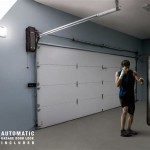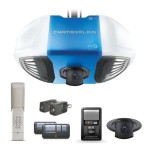Can You Turn A Garage Into A Bedroom? A Comprehensive Guide
The possibility of converting a garage into a functional bedroom is an attractive option for homeowners seeking additional living space without undertaking a full-scale home addition. Garages, often underutilized or relegated to storage, present a readily available footprint that can be transformed into a comfortable and private sleeping area. However, the process involves careful consideration of various factors, including compliance with building codes, structural modifications, insulation, ventilation, and aesthetic finishes.
The feasibility of converting a garage into a bedroom hinges on several key considerations. First, the existing structure must be assessed for its suitability for habitation. Garages are typically designed and constructed for vehicular storage, not for human occupancy. This often translates to inadequate insulation, insufficient electrical wiring, and a lack of proper ventilation. Second, local building codes and zoning regulations play a crucial role in determining the permissibility of such a conversion. Many municipalities have specific requirements for bedroom size, egress windows, and smoke detectors. Third, the cost of the conversion must be weighed against the potential increase in property value and the convenience of having additional living space. A poorly executed conversion can detract from the overall appeal of a home, while a well-designed and functional bedroom can significantly enhance its marketability.
Transforming a garage into a bedroom is not a simple cosmetic upgrade. It requires a comprehensive approach that addresses structural, mechanical, and aesthetic elements. The process typically involves several distinct phases, starting with planning and permitting, followed by structural modifications, insulation and ventilation upgrades, electrical and plumbing work, and finally, interior finishing.
Understanding Building Codes and Permits
Before any physical work commences, it is imperative to obtain the necessary permits from the local building department. Building codes are designed to ensure the safety and well-being of occupants by setting minimum standards for construction, electrical wiring, plumbing, and fire safety. Converting a garage into a bedroom typically requires a building permit, an electrical permit, and a plumbing permit, depending on the scope of the project.
The building department will review the proposed plans to ensure compliance with all applicable codes. These codes often dictate specific requirements for bedroom size, ceiling height, window size and placement (for egress purposes), smoke detectors, and carbon monoxide detectors. Egress windows are particularly important, as they provide a means of escape in the event of a fire. The size and location of the egress window must meet specific criteria outlined in the building code. Missing or inadequate egress windows can lead to permit denial or require costly modifications.
Zoning regulations also play a crucial role in determining the permissibility of a garage conversion. Zoning ordinances may dictate the minimum lot size, setbacks from property lines, and the allowable percentage of building coverage. Converting a garage into a bedroom may impact the overall building footprint and potentially violate zoning regulations. It is therefore essential to consult with the local zoning department before embarking on the project.
The permit application process typically involves submitting detailed architectural plans showing the existing structure, the proposed modifications, and the locations of all electrical outlets, plumbing fixtures, and windows. The plans must be drawn to scale and include sufficient detail to allow the building inspector to verify compliance with the applicable codes. Once the plans are approved, the building department will issue the necessary permits, allowing the construction to proceed.
Failure to obtain the necessary permits can result in significant penalties, including fines, stop-work orders, and even legal action. Furthermore, unpermitted work can create problems when selling the property, as potential buyers may be hesitant to purchase a home with undisclosed or unapproved modifications.
Addressing Structural and Insulation Requirements
Garages are typically built on a concrete slab, which may or may not be adequately insulated. In colder climates, it is essential to insulate the slab to prevent heat loss and maintain a comfortable temperature in the bedroom. This can be achieved by installing rigid foam insulation under the slab or by applying a spray foam insulation to the underside of the slab, if accessible.
The walls of the garage also require insulation to prevent heat loss and reduce noise transmission. Fiberglass batt insulation, spray foam insulation, and rigid foam insulation are all viable options. The choice of insulation material will depend on the climate, the budget, and the desired level of thermal performance. It is important to ensure that the insulation is properly installed to prevent air leaks and maximize its effectiveness. The R-value (resistance to heat flow) of the insulation should comply with local building codes.
The garage door presents a significant challenge in terms of insulation and security. Replacing the garage door with a standard exterior wall is a common solution. This involves framing a new wall, insulating it, and installing a door and window. Alternatively, the existing garage door can be replaced with an insulated garage door, but this may not provide the same level of thermal performance as a standard wall.
The ceiling of the garage may also require insulation, particularly if there is an unheated space above it. Proper insulation of the ceiling will help to prevent heat loss and maintain a comfortable temperature in the bedroom. In some cases, it may be necessary to add additional framing to the ceiling to accommodate the insulation.
In addition to insulation, it is important to address any structural deficiencies in the garage. The walls and roof must be structurally sound and able to withstand the loads imposed by the building code. If the garage is not structurally adequate, it may be necessary to reinforce the walls or roof before proceeding with the conversion.
Integrating Essential Utilities: Electrical, Plumbing, and Ventilation
Converting a garage into a bedroom requires extending existing electrical and plumbing systems or installing new ones. Electrical wiring must be installed to provide adequate lighting, outlets, and power for appliances. The electrical system must comply with the National Electrical Code (NEC) and local building codes. A licensed electrician should perform all electrical work to ensure safety and compliance.
Plumbing may be required if the bedroom will include a bathroom or if the existing plumbing needs to be relocated. This may involve running water lines, drain lines, and sewer lines to the garage. All plumbing work must be performed by a licensed plumber to ensure compliance with the Uniform Plumbing Code (UPC) and local building codes.
Adequate ventilation is essential for maintaining indoor air quality and preventing moisture buildup. Garages are typically not designed with ventilation in mind, so it may be necessary to install a new ventilation system. This can include exhaust fans in the bathroom, kitchen, and laundry room, as well as a whole-house ventilation system. The ventilation system should comply with the International Mechanical Code (IMC) and local building codes.
Heating and cooling are also essential for a comfortable bedroom. Depending on the existing HVAC system, it may be possible to extend the ductwork into the garage. Alternatively, a separate heating and cooling system may be required. This can include a ductless mini-split system, an electric baseboard heater, or a window air conditioner. The heating and cooling system should be sized appropriately for the size of the bedroom and the climate.
Proper lighting is crucial for creating a comfortable and functional bedroom. Recessed lighting, ceiling fans with lights, and table lamps are all viable options. The lighting should be designed to provide adequate illumination for reading, working, and relaxing. Natural light is also important, so it is advisable to install a window or skylight if possible. The window should be sized and located to provide adequate natural light and ventilation.
The presence of a fire-rated wall separating the garage from the main house may need to be maintained or upgraded to meet current fire safety standards. This wall typically prevents the spread of fire from the garage to the living areas. The building department will specify the required fire-resistance rating for this wall, usually expressed in hours (e.g., a one-hour fire-rated wall). Maintaining or upgrading this wall is crucial for the safety of the occupants.
Attention to detail is paramount in a garage conversion project. Proper planning, careful execution, and compliance with building codes are essential for creating a comfortable, safe, and valuable living space. Consulting with experienced professionals, such as architects, contractors, and engineers, can help to ensure a successful outcome.

51 Garage Conversion Ideas To Convert Your Living Space

Garage Remodel Turning Your Into A Living Space Ahs

6 Shocking Garage Conversion Before And After Photos Maxable
How Much Does A Garage Conversion Cost

What You Need To Know When Converting Your Garage A Bedroom Element Home Remodeling

How To Convert Your Garage Into A Bedroom And Rent It Out Soho Real Estate

Garage Conversion Thinking Of Converting A Into Living Space

Tips For Converting A Garage Into Bedroom Abk Construction Group

Garage Conversion Into Bedroom Guide My Site Plan

How We Converted Our Garage Into A Bedroom And Bathroom








